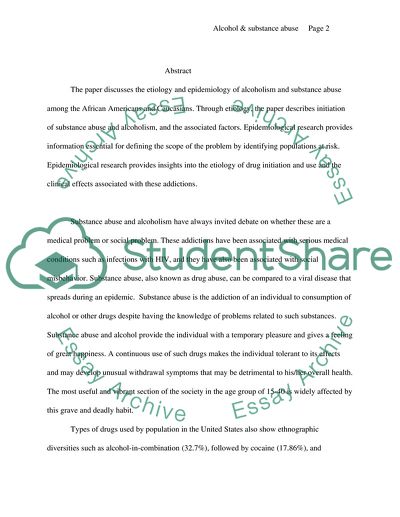Cite this document
(“Alcohol and Substance Abuse in Blacks and Whites Coursework”, n.d.)
Alcohol and Substance Abuse in Blacks and Whites Coursework. Retrieved from https://studentshare.org/social-science/1721193-etiology-and-epidemiology-of-african-americans-and-caucasians-europeans-between-the-two-races-who-have-the-highest-addiction-in-alcohol-and-substances-abuse
Alcohol and Substance Abuse in Blacks and Whites Coursework. Retrieved from https://studentshare.org/social-science/1721193-etiology-and-epidemiology-of-african-americans-and-caucasians-europeans-between-the-two-races-who-have-the-highest-addiction-in-alcohol-and-substances-abuse
(Alcohol and Substance Abuse in Blacks and Whites Coursework)
Alcohol and Substance Abuse in Blacks and Whites Coursework. https://studentshare.org/social-science/1721193-etiology-and-epidemiology-of-african-americans-and-caucasians-europeans-between-the-two-races-who-have-the-highest-addiction-in-alcohol-and-substances-abuse.
Alcohol and Substance Abuse in Blacks and Whites Coursework. https://studentshare.org/social-science/1721193-etiology-and-epidemiology-of-african-americans-and-caucasians-europeans-between-the-two-races-who-have-the-highest-addiction-in-alcohol-and-substances-abuse.
“Alcohol and Substance Abuse in Blacks and Whites Coursework”, n.d. https://studentshare.org/social-science/1721193-etiology-and-epidemiology-of-african-americans-and-caucasians-europeans-between-the-two-races-who-have-the-highest-addiction-in-alcohol-and-substances-abuse.


